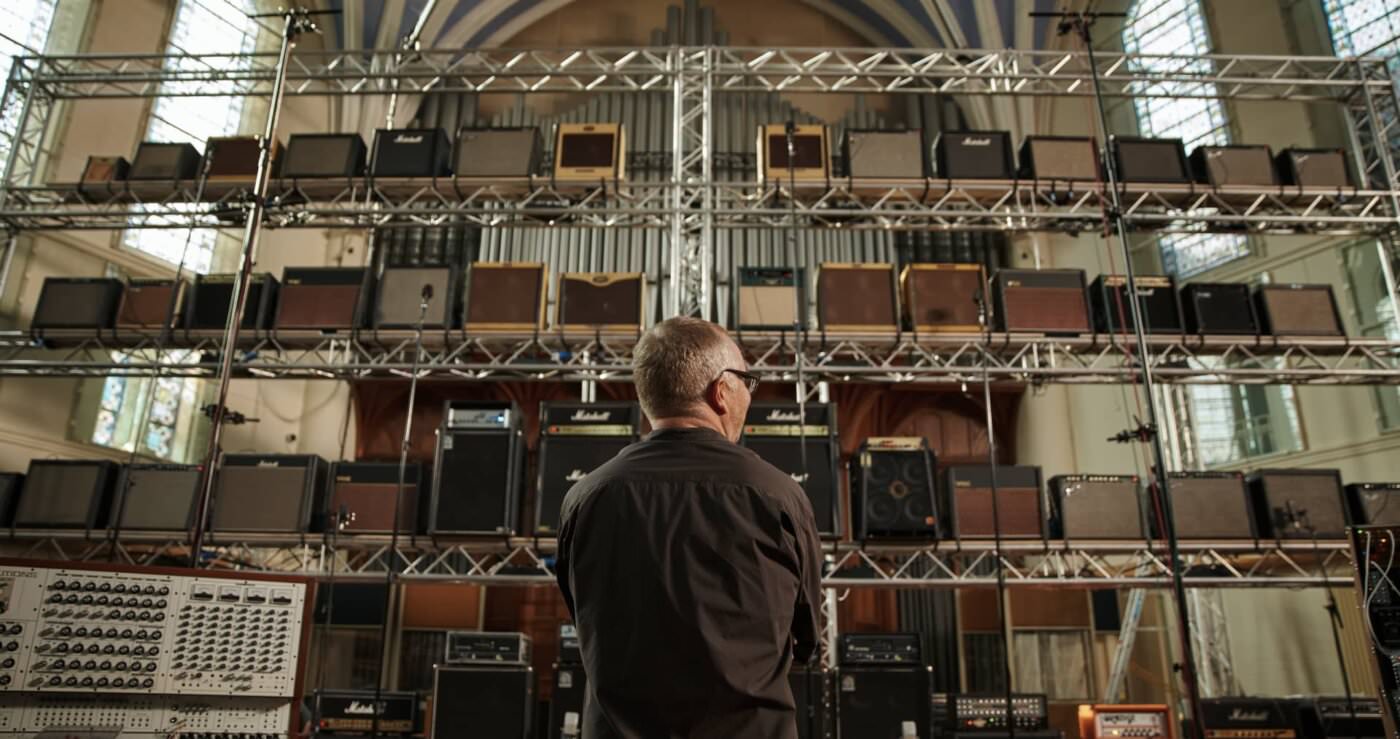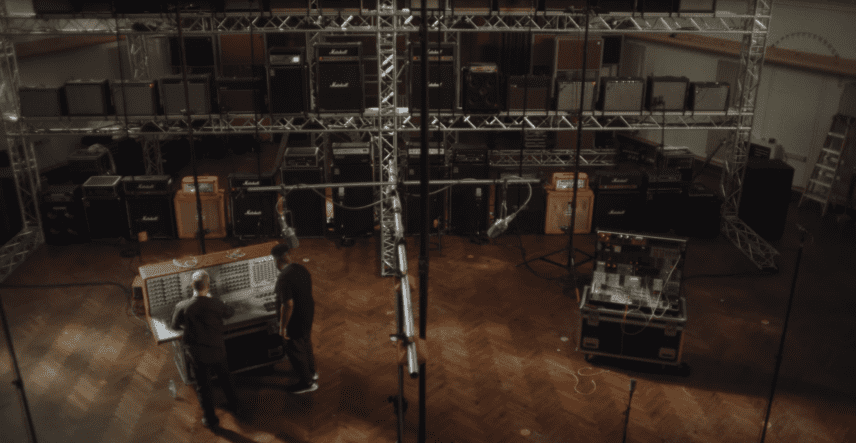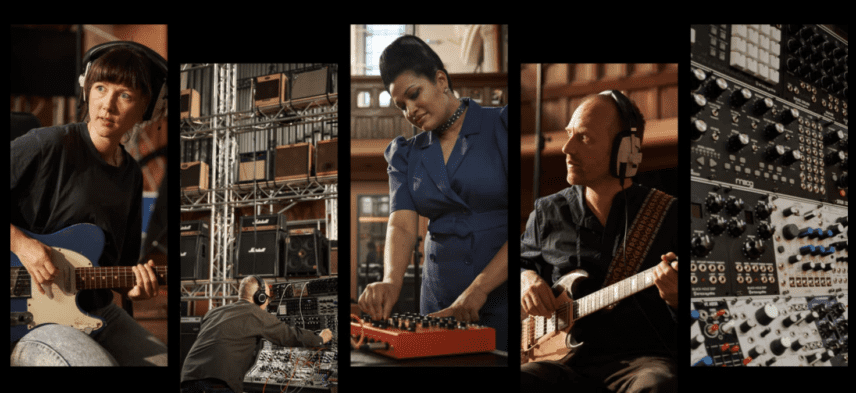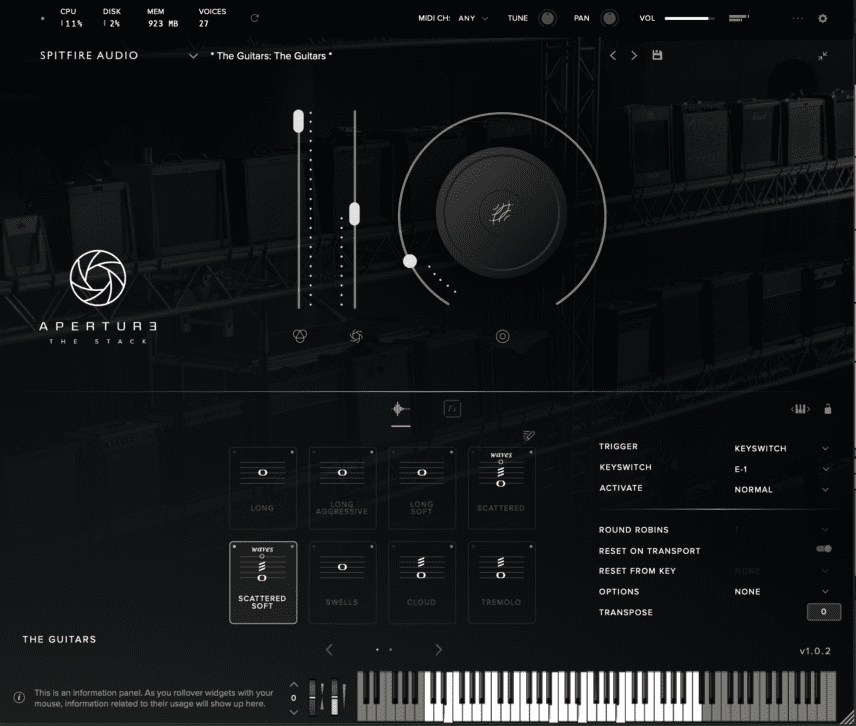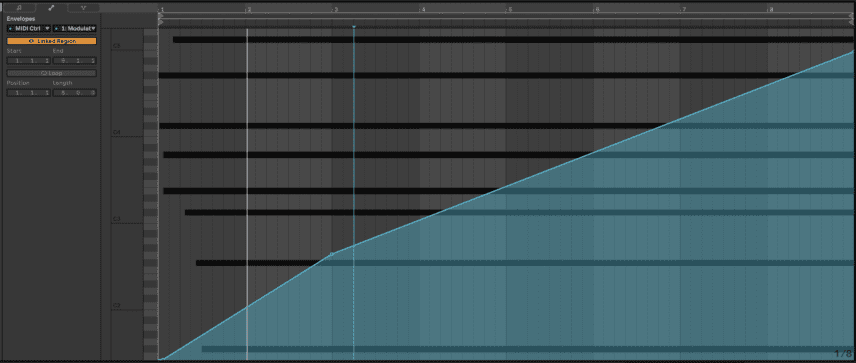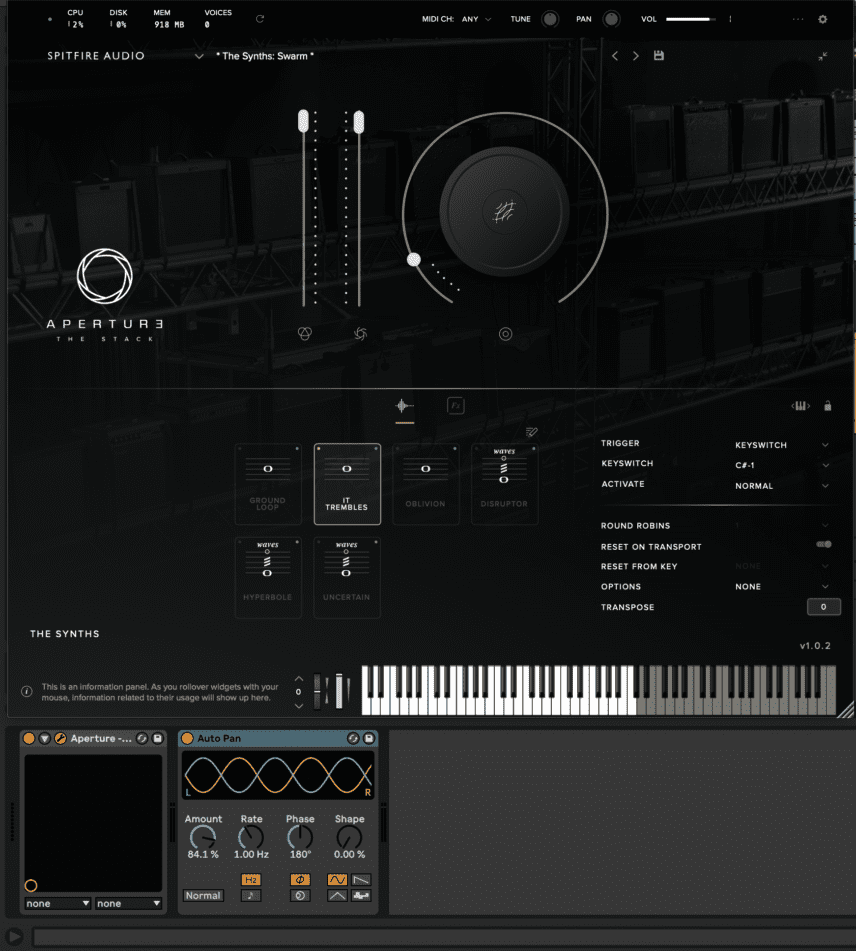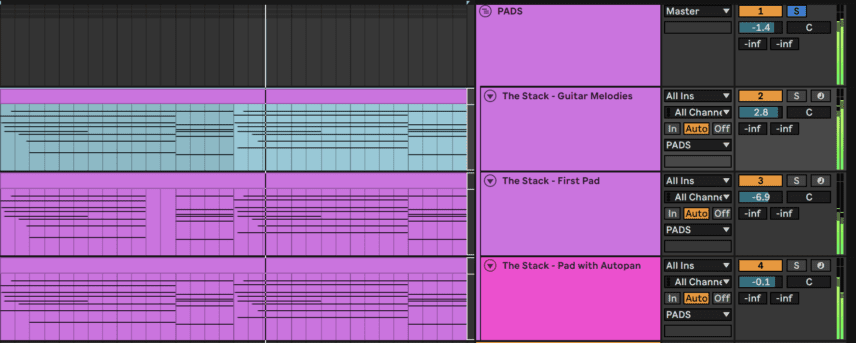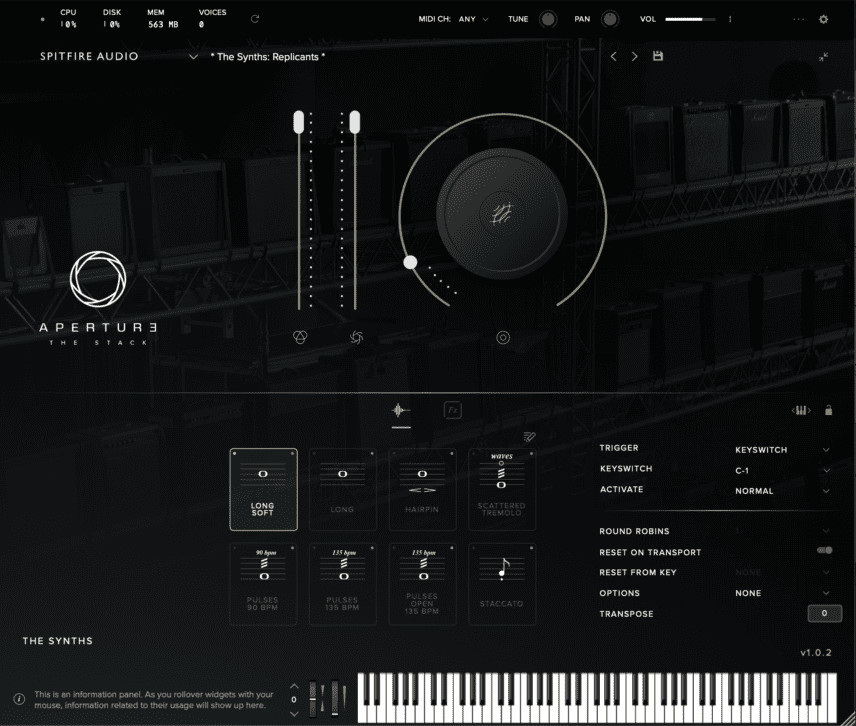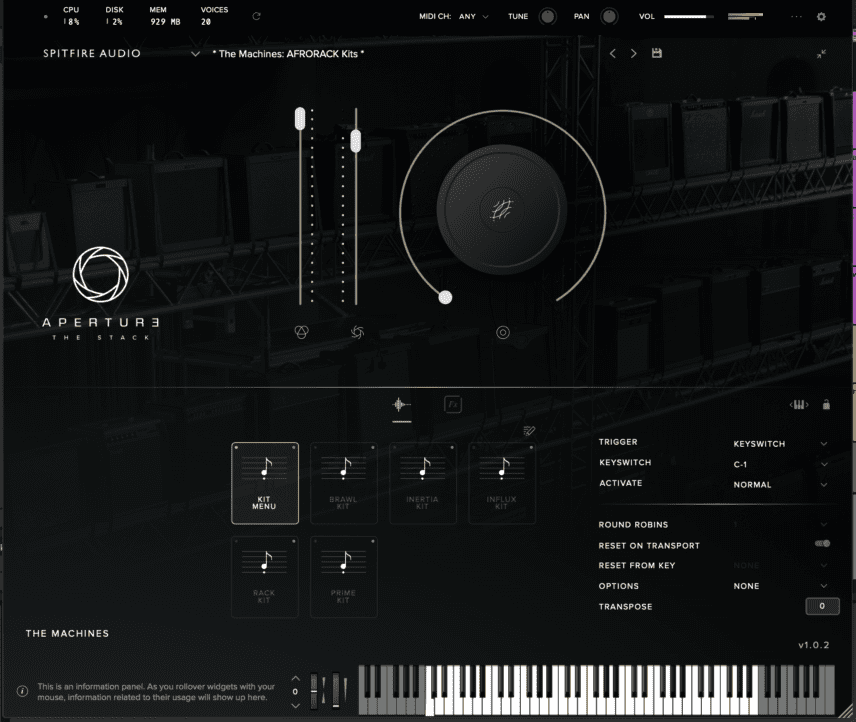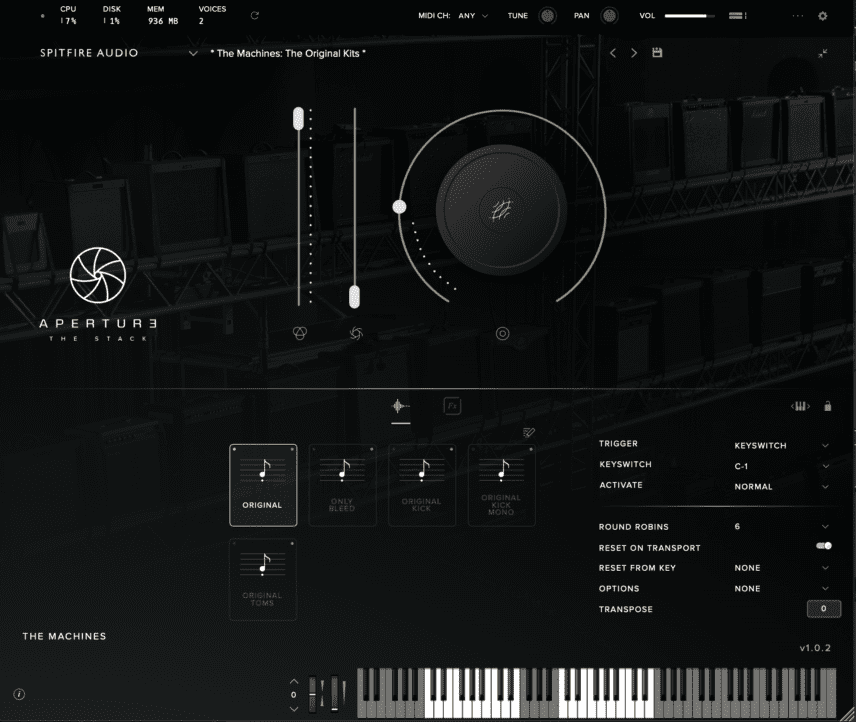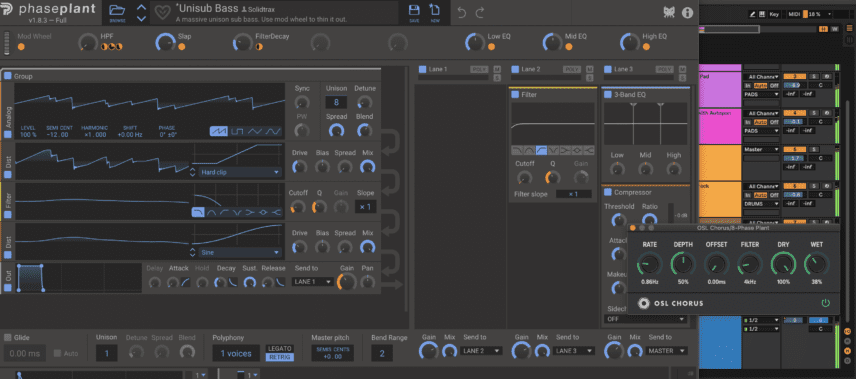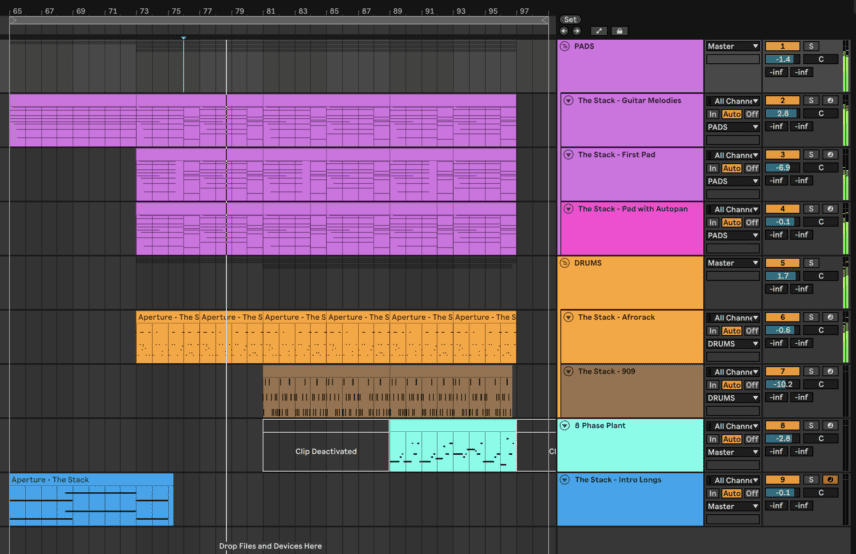In this Passing Notes, we’re getting our hands dirty with Spitfire Audio’s Aperture: The Stack. We’ll use drum, synth and guitar patches from their most ambitious instrument to date to make an ambient breakbeat groove.
In late 2021 Spitfire Audio released Aperture – The Stack. The British company has described it as their ‘biggest’ instrument yet. The term ‘big’ here doesn’t necessarily mean the most sounds or presets, but instead the sheer size of the recording rig! The elaborate setup in AIR Studios’ Lyndhurst Hall comprised of four levels of rigging, containing a world record-breaking 56 guitar amps and four subs. Think Slash on steroids and then some.
You can download the MIDI files below:
The synths and drum presets created with this stack have been recorded with an impressive lineup of synths and drum machines. The synths used include the Analog Solutions Colossus and Spitfire co-founder Christian Henson’s huge modular rig – modestly named ‘the Wall’ in the instrument’s presets. Other notable mentions are eight Soma Lyra-8’s, two Deckard’s Dream MKII’s, two Roland Juno 6’s, two Sequential Prophet’s and an original Roland TR-808. This is the sort of stuff that will drain your bank account…
The main concept of the instrument stems from a dynamics parameter that introduces the next level of amps as you increase it. With the setting at max, all four levels of the rig are in action at once, outputting three-dimensional sounds. Each main preset has a selection of sub-presets with different expressions, textures, and intonations.
In this article we’re going to use Aperture – The Stack to compose a one-minute ambient breakbeat tune in the style of artists like Stenny and Skee Mask. We’ll start with organic textures and pads then move on to textural drums and a bassline.
Here’s what we’re creating today:
Scattered Soft Guitars
We’ll kick off our track with some arpeggiated guitar sounds. ‘The Guitars’ is a very powerful preset with lots of different expressive sub-presets. We especially like the Scattered sub-presets because they work as an ambient arpeggiator.
Holding down a chord introduces realistic guitar strumming for each individual note. These were recorded live with four guitarists and two bassists playing simultaneously.
Let’s start with a sustained F# Minor 7 (add9) chord, containing the following notes:
F#1 – F#2 – C#3 – E3 – A3 – C#4 – G#4 – C#5
After the eight bar intro, the chord progression then loops as follows:
Chord 1: F# Minor 7 (add9)
F#1 – F#2 – C#3 – E3 – A3 – C#4 – G#4 – C#5
Chord 2: E Major 13 (add9)
E1 – B2 – E3 – F#3 – B3 – C#5
Chord 3: B Minor 7 (11) (add9)
B1 – F#2 – C#3 – E3 – A3 – C#4 – A4 – C#5
Chord 4: E Major 13 (add9)
E1 – B2 – E3 – F#3 – B3 – C#5
The first and third chords last for three bars. The E major 13 (add 9) chord has a duration of only one bar in both instances that it plays.
N.B If you want to learn more about writing wide chord progressions be sure to check out our recent Passing Notes article on Massive Chords.
You’ll notice that the notes are widely spread across several octaves. This works great with The Stack’s sounds and gives us lots of mixing flexibility.
The next step is to program some upwards dynamics automation. By doing so, the first eight bars of guitar will gradually get louder.
Here’s how the ambient guitar intro sounds:
The Pads
We’re going to add two pad parts that play exactly the same notes that the guitars are playing. This is a shortcut to creating a huge wall of sound!
For the first pad we’ll go for the Dave: Longs preset’s FACSIMILE sub-preset.
Here’s how this sounds with our chord progression:
For the second pad we’ll use The Synths: Swarm’s IT TREMBLES sub-preset. We’ll also insert Live’s Auto Pan and increase the amount to around 84% to have the sound move dynamically across the stereo spectrum:
Here’s how both pads sound with the guitars:
Trailer-Style Bass Notes
One of our favorite qualities of The Stack is how full the low registers of the synth presets sound. They also sound great with a little bit of pitch bend and dynamics modulation. This kind of automation on low sustained notes brings us into the realm of film and in particular trailers.
We’ll use this at the very beginning while the guitar melodies are playing the long sustained F# Minor 7 chord. The Synths: Replicants preset’s Long Soft sub-preset is ideal for the task.
We’ll write in two sustained F# notes an octave apart for a more full sound. These will play for four bars. To change things up we’ll add sustained B notes for the next four bars. Next we’ll play in some pitch bend and dynamics modulation with a MIDI Keyboard, using the Pitch Bend and Mod wheels.
Here’s how the Replicants part sounds in solo:
And here’s how it sounds with the intro guitars:
The Drums
Sound designer and founder of AFRORACK Aaron Guice was also involved in the recording of this instrument. His drum kit presets within the ‘The Machines: AFRORACK Kits’ preset contain a unique and thumping selection of textural drum kits.
We’ll load up the KIT MENU sub-preset and program a breakbeat style beat. Ignoring the hi-hats for now, the first step is the main kick and snare hits. We can also program hits for the other drums in between to add groove and movement.
Here’s how the beat sounds:
In addition to the AFRORACK kits, Spitfire also ran an original Roland TR-808 through their army of amplifiers. We’ll use three different hi-hat hits to write a pattern that compliments the beat.
As we did with the pad parts, it’s possible to use the main Dynamics parameter to add expression. The more this parameter is increased, the more drive and warmth are added to the hats. With continuous modulation, the part sounds much more live.
Here are the 808 hats in solo:
The reverb effect within the plug-in is high quality and emulates the space in AIR Studios with exact precision. There are also other effects to choose from including a low-pass filter, attack, release, noise, and portamento.
Here are the hats together with the AFRORACK drums:
The Sub Bassline
We’re going to jump to another synth for the sub bassline. This is mainly because the low registers of The Stack’s synth presets sound much better with long sustained bass parts, as opposed to more active lines.
We’re going to use Kilohearts’ Phase Plant synth’s Unisub Bass preset. We’ll also add some chorus via Oblivion Soundlab’s free OSL Chorus plug-in. This will help the line pop out more in the busy mix.
The notes are mainly playing the chord root notes with fills scattered in between. The one exception is in the fourth bar when the bass plays a G# note under the E major chord. This works because G# is the Major 3rd note of the root, E.
Here’s how the bassline sounds in solo:
And here’s the full arrangement with all parts playing:
You can find out more about Aperture – The Stack at Spitfire Audio.
*Attack Magazine is supported by its audience. When you purchase through links on our site, we may earn an affiliate commission. Learn more.
